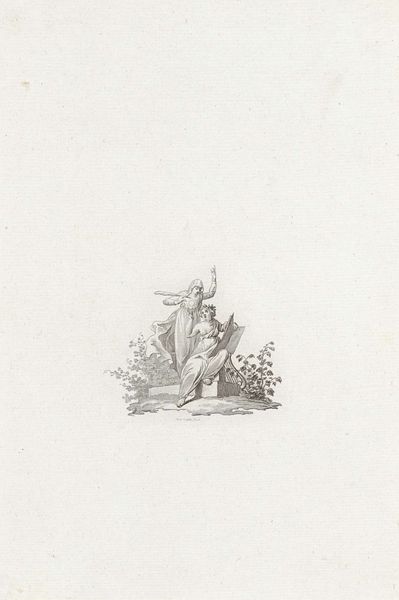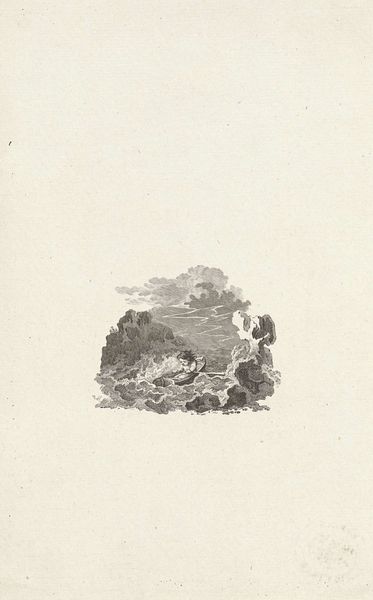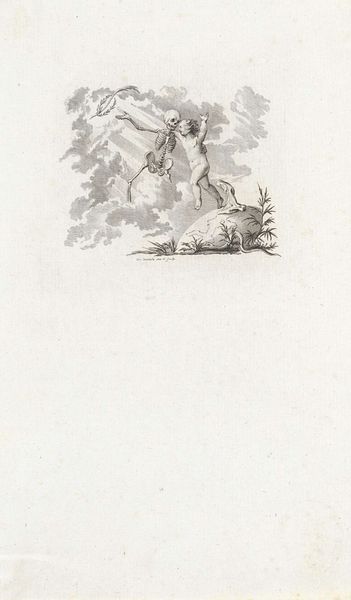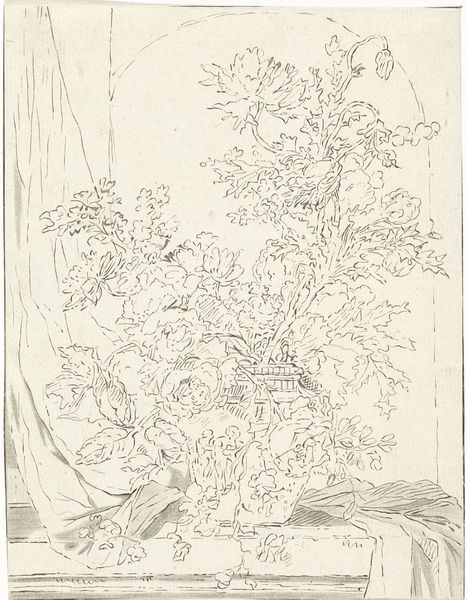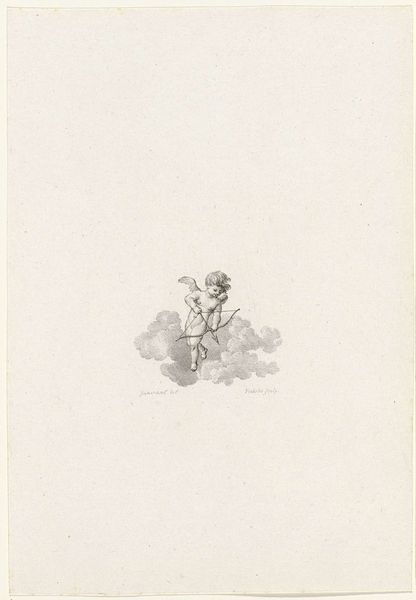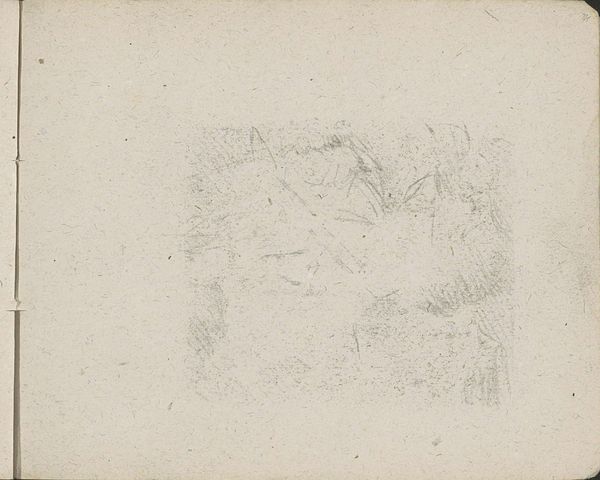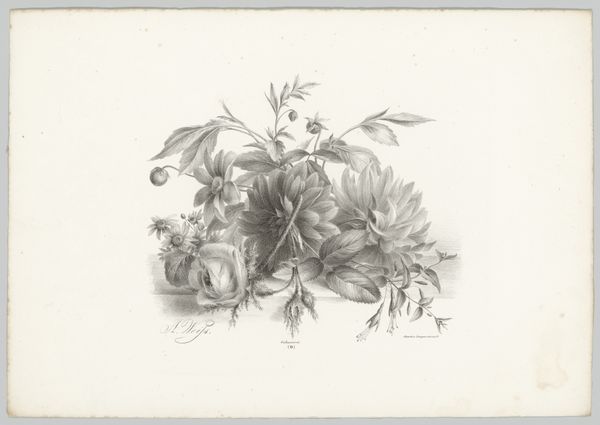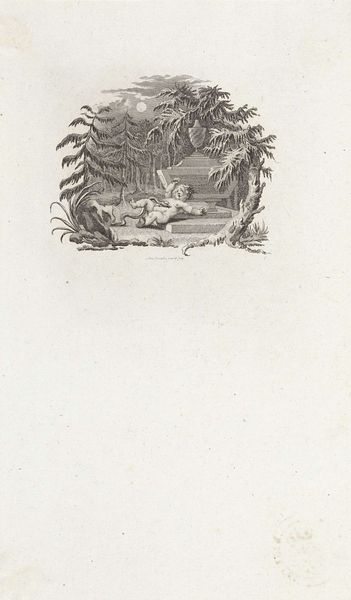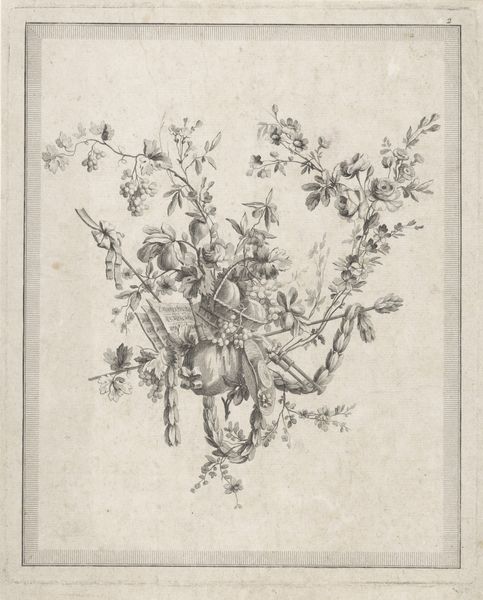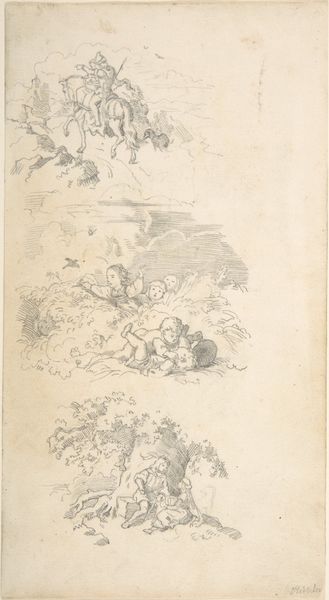
Dimensions: height 232 mm, width 151 mm
Copyright: Rijks Museum: Open Domain
Editor: Here we have Reinier Vinkeles's 1786 engraving, "Slang en duif in de woestijn" – Snake and Dove in the Desert. It's incredibly detailed for such delicate work. I’m immediately drawn to the tension between the snake and the dove, obviously, but also… How do you read the visual relationships between these creatures and the landscape itself? Curator: Precisely. Consider the historical moment – 1786. This wasn’t merely about illustrating nature. The engraver's labor, the paper's source, the dissemination of this print, all tie into the larger socioeconomic structures of the Dutch Republic at the cusp of major social upheaval. Think about how access to printed images was expanding and how these images influenced popular perception of nature, or even colonial projects and the appropriation of materials to create luxury items. Do you see any trace of how raw materials are consumed or created here? Editor: Well, it looks as though paper would've been essential for creating the print in the first place. But beyond the obvious dependence of printed artworks on natural material such as plant fiber, I'm still at a loss for connecting consumption habits. The image presents more symbolic oppositions. Curator: But is it truly separate? Consider the ‘desert’ here – not a pure wilderness, but a carefully arranged stage. Notice how Vinkeles crafts the landscape using line and tone. His skill depends on very specific material knowledge – the properties of the copper plate, the ink, the press itself. Furthermore, it must have circulated amongst people. Can you think of who these buyers would be and how that relates to their economic status at this point in time? Editor: I suppose that those who could afford art in that period were nobility or the merchant class, which further raises issues of ownership. And the symbolism could easily be a moralizing tale directed at them: look at these figures, don't hoard wealth or succumb to temptation, et cetera. Curator: Exactly! The very act of creating and consuming these prints speaks to class, labour, and the consumption of raw materials undergirding this seemingly simple image. Editor: Wow, I hadn’t thought about it that way, focusing instead on its symbolism. Now I see it’s deeply embedded in the economic and social fabric of its time. Thanks for clarifying that. Curator: It’s all there in the lines, isn't it? Material speaks volumes, if you know where to listen.
Comments
No comments
Be the first to comment and join the conversation on the ultimate creative platform.
